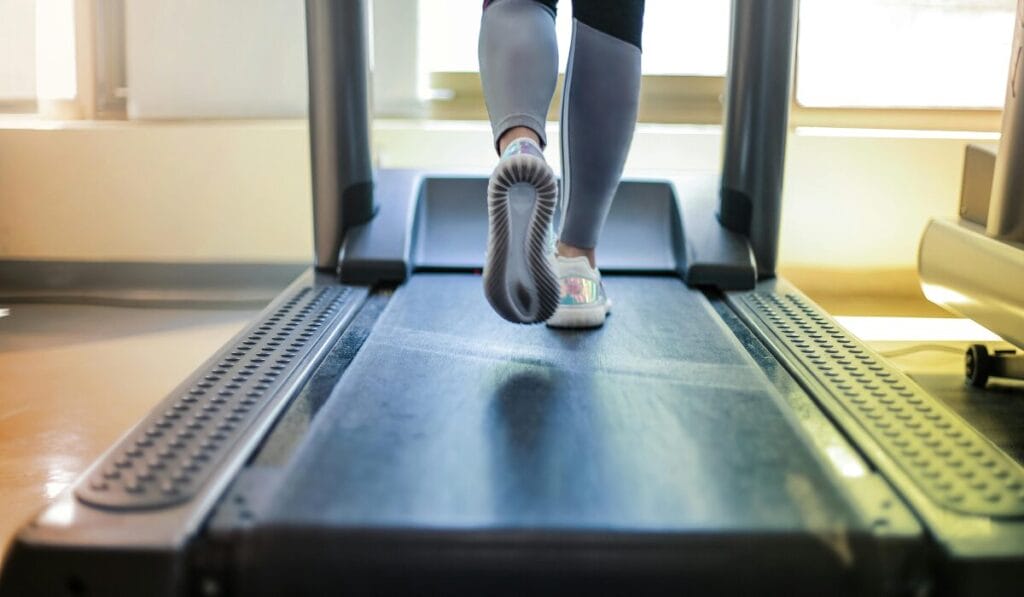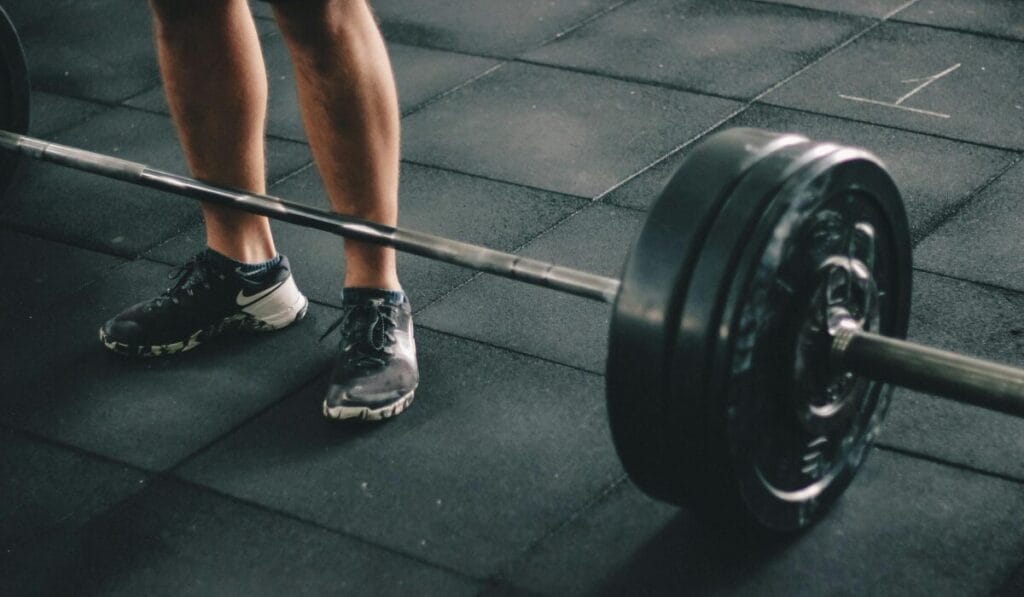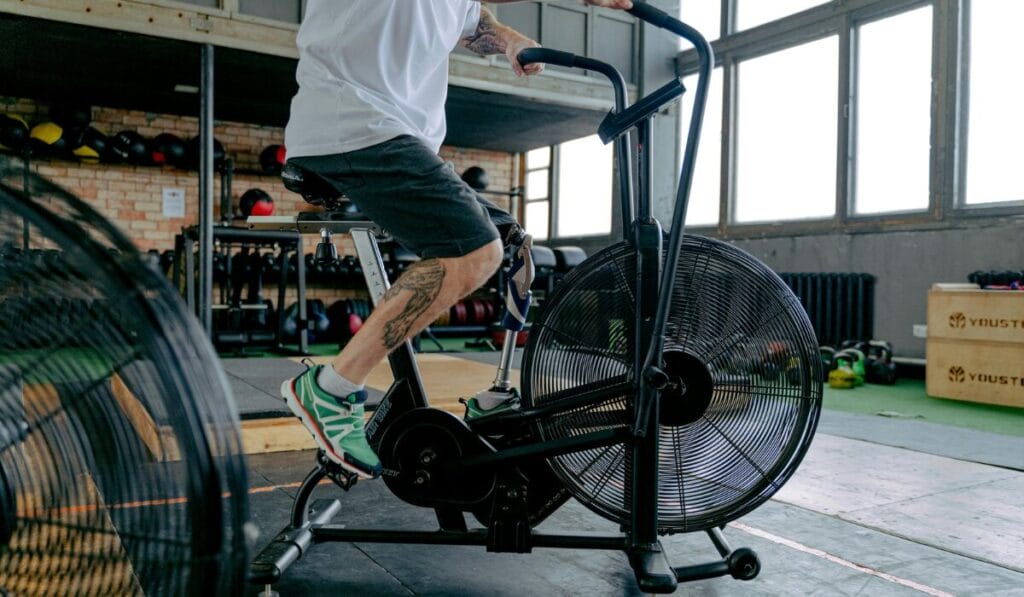Can I Use Running Shoes for the Gym?
Yes, running shoes can be used for the gym, but not forever, because running shoes are designed for forward movement, while lateral movement in the gym requires stability, which is why it is better to use gym shoes or cross-training shoes.
Although running shoes are ideal for achieving the goal, everyone knows that gym workouts have different types of exercises, movements, and exercises that require different types of shoes. This comprehensive guide will review the pros and cons of running shoes at the gym, how different shoes are used for different workouts, and how to choose the best shoe for your needs. Important tips will be provided.
Running Shoes Features and Functionality
Running shoes are made for running. So whether one is a marathoner or a casual jogger, running shoes cater to both forward and repetitive motion, and that’s it. Their designs typically include
- Cushioning: The midsole of a running shoe absorbs shock and protects joints from the repetitive impact of running.
- Lightweight Construction: Reduces fatigue during long-distance running.
- Flexibility: The role of running shoes in promoting the natural rolling motion of the feet is not hidden from anyone.
- Traction: The outsole provides a firm grip on hard paths, uneven ground, roads, tracks, or trails.
These features are ideal for running but need to be more up to par with the demands of various gym workouts, which often feature lateral movements, balance, and stability.

Why People Consider Running Shoes for the Gym
Many gym-goers already own a pair of running shoes, which can simplify their exercise choices. Running shoes are also lightweight, comfortable, and versatile enough for certain gym activities, such as those focused on cardio. However, their limitations become apparent in certain gym exercises, such as weightlifting or high-intensity interval training (HIIT).
Gym Exercise Necessities vs Running Shoes
After analyzing the demands of different gym activities, it will be decided whether the use of running shoes is right for the gym or not.
1. Weightlifting
Weightlifting exercises such as deadlifts, squats, and bench presses require a strong core, so it’s still great for impact absorption.
Alternative: Flat-soled shoes or strong-soled weightlifting shoes are the right choice if one is a heavyweight lifter.
2. Cardio Workouts
Certain exercises, such as cardio-focused, running on a treadmill, or cycling, can be done in running shoes. Because their cushioning is comfortable and reduces, but almost eliminates, pressure on the feet during repeated walking. However, running shoes require a background in dynamic cardio activities, such as jumping rope, Zumba, or step aerobics.
Best Alternative Solution: Most people opt for cross-training shoes for multi-dimensional cardio activities.
3. High Interval Training (HIIT)
HIIT features fast movements, quick directional changes, and lateral agility. Running shoes are designed to move forward, constantly striving to provide the traction and support needed for these activities. Their cushioned soles also contract under pressure, reducing energy transfer during jumps and sprints.
Best Alternative Solution: Shoes with the best lateral support and grip, such as cross trainers or court shoes, are the world standard for HIIT workouts.
4. Functional Training
As is well known, functional training involves more bodyweight exercises, such as kettlebell swings or plyometrics. These types of activities require a stable and responsive shoe while ensuring proper movement patterns. Running shoes, because of their thick midsoles, hinder the balance and natural movement of the feet.
Best Alternatives: As mentioned earlier, minimalist shoes or cross-training shoes are as good for functional training as they are for others.
5. Flexibility and Core Work
The pointed sole of running shoes can cause balance and alignment issues, so exercises such as yoga, Pilates, or stretching sessions require a minimal shoe to improve the lower range of motion and posture. So running shoes are not suitable for this.
Best Alternative: Emphasize barefoot training or use sturdy socks that are better for flexibility and core work.

Benefits of using running shoes at the gym
It is not that the use of running shoes in the gym is wrong at all, but there are some benefits of using them in the gym.
- Comfort: Activities that require less activity, such as walking or light cardio, are the best options. Running shoes work well for treadmill running, elliptical training, or stationary cycling.
- Accessibility: For those who already own a pair, this makes them the best option to suit their budget in the beginning.
- Breathability: Exercising becomes difficult when feet are not cool, so running shoes also include breathable materials, which keep feet cool during exercise.
Disadvantages of Using Running Shoes in the Gym
Running shoes typically can handle some but not all gym activities, which is why they fall short in areas where stability, grip, and support are important. The only difference is there are some points of disadvantages.
- Limited Support: Running shoes are not designed for a one-way movement, which makes them less suitable for exercises or sports such as agility and agility.
- decreased stability: A disadvantage of soft cushioning is that it can also disturb your balance during weightlifting and functional training.
- permanent Concerns: If running shoes are high-impact or multi-directional movements, gym workouts can wear them off faster.
- slackness: Where explosive power or ground connection is required, they can also stop these operations

choose it for the Gym
Mayo Clinic says choosing the right shoes for each activity protects against chafing and plays a fundamental role in overall performance. Choosing the best footwear is essential to avoid injury and get the best performance out of your shoes. For a complete overview, check out our ultimate guide to the best walking shoes before exploring gym shoe options. Here’s a breakdown of some popular gym shoe options:”
1. Cross-Training Shoes
As you know cross trainers are versatile shoes and are designed for a variety of gym activities, including strength training, cardio, and agility training. ,These are the basics.
- Background support for multi-dimensional movements and others.
- Durable soles for varied surfaces.
- Stability for moderate weightlifting etc.
2. Weightlifting/Bodybuilding Shoes
Weightlifting shoes are made for heavy lifting. Its main features include:
- A raised heel for better squat depth and posture for those who prefer heels.
- A flat, sturdy sole for maximum durability and strength.
3. Minimalist Shoes
Minimalist shoes mimic the barefoot conditions of ancient traditions, allowing for a natural range of motion. They are ideal and best for:
- Functional /Beauty training.
- Balance exercises and fitness.
- Core/most important work.
What Experts Say
According To Runrepeat.com
If you can’t afford separate shoes for running and gym, you can use these shoes for both.
Source: RunRepeat.com
According to rei.com
Cross-training shoes are designed for cross-training, the gym, and any balance-based activity.
Source: rei.com
Real Users Reviews
Here we will describe a few real reviews that prove that running shoes can be used for the gym.
Review From Zappos
A verified user says about running shoes, “These are great shoes, fit comfortably, and are easy on the feet for working out at the gym”.
Source: Zappos.com
Review From Amazon
A verified user writes about the Ultra Boost 19 that “these shoes are designed for running but can also be used in the gym”.
Source: Amazon.com
Conclusion
In summary, running shoes can be used in the gym, but their effectiveness depends on the type of exercise. They are great for cardio-focused activities like treadmill running, but may fall short in exercises that require lateral support, stability, or strength. If someone is really serious about their fitness journey, investing in specific gym shoes for their routine can significantly increase their performance and reduce the risk of accidents, such as injury in the long term. It can ensure peace of mind for a long time.
See and remember that the right shoes are not just for convenience but are an essential part of exercise gear. Whether lifting weights, doing HIIT, or attending a yoga class, choosing the right footwear will support your fitness goals and keep your feet happy.
FAQs
Q1. Can I use running shoes for the gym?
Yes, running shows can be used for the gym, however, since the running shows are designed for forward movement and include extra cushions, regular use is valid only for running, and gym shows and training for heavy lifting and cross-training. Shows are the best option.
Q2. Is it bad to wear running shoes in the gym?
It is not bad, but it depends on your workout, for example, running shows are correct for cardio machine, treadmill running and comfortable running, but those exercises that require balance such as squats, lung and weight training, then running shoes cannot provide better support.
Q.3 What’s the difference between running shoes and gym shoes?
Running shoes are designed for forward motion that provides comfort over long distances, have cushioned soles, and are also lightweight in design, while gym shoes are designed for activities like lifting, jumping, and exercising.
Q.4 Are cross-training shoes better than running shoes for the gym?
Yes, cross-training shoes are better for gym use than running shoes, as they have the ability to handle different types of movements such as forward, backward, etc. While running shoes are designed for forward movement only.
Q5. Can we use running shoes for weightlifting?
It’s not sure and recommended. But running shoes lack the stability required for weightlifting. His Flat-soled or weightlifting shoes are better options.
Q6. How to do cardio at the gym in running shoes?
Running shoes are designed for extra activity, so they’re perfect for jogging, treadmill running, and cardio exercises, and you’ll feel comfortable and protected from shock every time.
Q7. By the way, what are the best shoes for gym workouts?
By the way, you will find different brands in the market, but cross-training shoes are best for gym workouts because they have the ability to maintain stability, flexibility, and balance.

